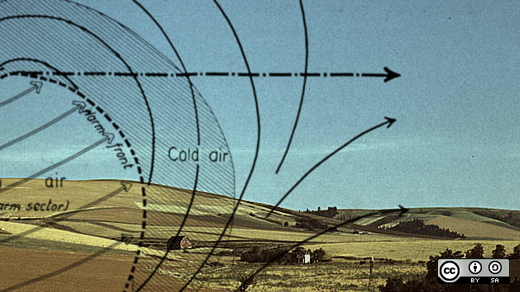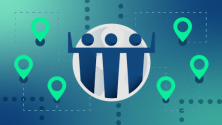For years, meteorology students learned their craft at the tip of a colored pencil, laboriously contouring observed data by hand. While many forecasters still practice this art, computers have changed operations, research, and education. Open source software and open data are poised to bring more changes to the field.
In a sense, openness has always been there. Meteorology has a culture of sharing by its very nature—after all, what good is a forecast if you don't share it? The National Weather Service data is publicly available if you know where to look for it (and what to do with it once you've found it). And while much of the software in use by educational institutions is open source, until recently there was little interoperability. Different visualization suites had their own data formats, so raw data would have to be processed several times. Students and their instructors were effectively limited to whatever options the tools they use provide.
But a shift is underway in the community. By using a variety of open source projects, meteorologists can use "one tool to read the data, then do any calculating they want," Professor Mike Baldwin explains. Baldwin is an associate professor in the Department of Earth, Atmospheric, and Planetary Sciences at Purdue University. Along with Stephen Harrell of Purdue's Research Computing group, Baldwin is working to give undergraduate meteorology majors more hands-on experience in manipulating weather data.
Instead of monolithic and domain-specific tools, students are learning to use and develop software written with broadly-used scientific libraries. Python has become the dominant language, thanks in no small part to libraries like SciPy, NumPy, and matplotlib. Students can use these tools to do exactly the sort of data analysis they want while having assignments that are more relevant to their studies and interests than general computer science coursework. In addition, using multi-domain tools and data formats allows for easier collaboration with other disciplines.
The nature of the data is changing as well. "Data sets are too big to pull down and process the old-fashioned way," Baldwin says, referring to the traditional model of pulling all data as it is generated, processing it, and storing it on disk. Web services such as OPeNDAP allow applications to fetch just the right amount of data as needed. The combination of readily-available data and flexible open source tools to process it allow today's meteorology students to have an unprecedented ability to analyze and interact with the weather.
Many students enter the program with little, if any, programming experience. Harrell draws an analogy to other sciences. Just as chemistry students learn not only chemistry but lab procedures and equipment, so too must meteorology students learn about the tools of their trade: "If you're forecasting today, you're using computers." Most of the course development so far has been focused on electives, but the next step is to incorporate these tools into the senior capstone forecasting class. Baldwin's goal is to "change the curriculum and make this the standard way of forecasting."







1 Comment